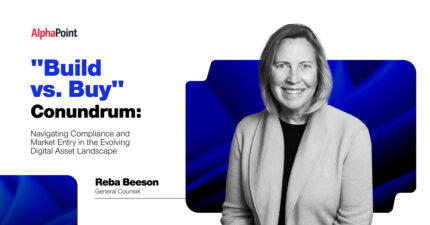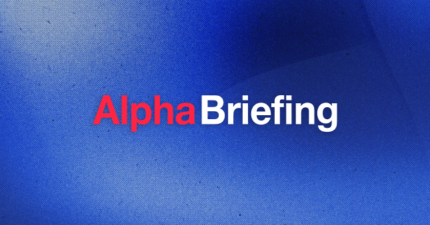What Are the Costs of Launching a Forex White-Label Brokerage?
Starting a forex brokerage from scratch could cost you upwards of several million, depending on the regulatory environment and infrastructure needed.
Using a white-label forex solution, on the other hand, can drastically reduce these startup costs, allowing you to launch your business faster and much more affordably.
In this article, we’ll outline the startup costs for a white-label forex brokerage, the benefits of forex white-labeling, and the key factors that influence these costs. These insights will help you choose the right provider and set your business on the path to success.
Understanding Forex White-Labeling
Forex white-labeling allows you to offer foreign exchange trading services by licensing a pre-built, unbranded software solution. You’ll be able to customize the platform to fit your brand and your clients’ needs without having to build it from scratch, saving you significant amounts of time and money.
While you’ll still need some development resources to customize and integrate your solution, the core platform is already built, tested, and ready for branding and tailoring.
Key components of a white-label brokerage include the:
- Platform: This is the trading software you’ll offer to your clients, branded and customized to fit your business. It’s the core of your brokerage operation, enabling clients to execute trades, analyze markets, and manage their accounts.
- White-label provider: Your provider is the company that you’re licensing your forex brokerage and trading software from—they manage the back-end and provide support and updates. They may also offer additional services like risk management tools, liquidity solutions, reporting systems, and compliance assistance.
- Brokerage firm: This is your business, which handles the client relationships and branding. You’re responsible for marketing your services, acquiring clients, and providing customer support. As a white-label forex broker, you set the trading conditions, such as spreads and commissions, and ensure compliance with regulatory requirements.
Choosing a reputable provider ensures you have a reliable and secure platform, along with the necessary support to maintain smooth operations. Different white-label providers offer varying services and support, which will impact your startup costs and resource requirements. The main options include:
- Full-stack solution: Providers like AlphaPoint offer a ready-to-go trading and brokerage platform. This comprehensive solution requires minimal additional development and is ideal for quickly launching your brokerage.
- Partial solution: In this case, you may receive the brokerage aspect only, and you act as the middleman, connecting clients to established trading platforms.
- Back-end only: This option provides the core trading infrastructure, leaving you to develop or integrate your own front-end user interface. It’s suitable for firms with strong development capabilities looking for maximum customization.
Benefits of white-labeling
Whether you want to set up a forex brokerage, an OTC trading platform, or a crypto exchange, white-labeling offers a number of advantages. You can enter the market quickly, save on costs, and leverage advanced technology and expertise.
Faster Market Entry
Building a forex trading and brokerage platform from scratch requires extensive research and development time. Whereas white-labeling helps you to enter the forex market fast.
You don’t need to develop your own infrastructure from scratch. Instead, you use a turnkey solution provided by an established white-label software provider. You can launch your forex brokerage business in weeks instead of months.
Cost Efficiency
Developing your own forex trading platform and infrastructure is expensive. But with white-labeling, the upfront and ongoing investment is much smaller. The platform is already developed, and technical support, software updates, and maintenance are built into the price.
With these savings, you can offer competitive pricing to your clients and allocate your budget to other important areas, like marketing and client support.
Expertise and Technology
When you partner with an established white-label provider, you also benefit from their expertise and technology.
These providers have years of trading experience and have already developed reliable trading platforms. And they offer advanced tools and features that can improve your service quality, such as:
- Fully customizable UI/UX tool sets
- Powerful customer relationship management (CRM) systems
- SDK’s for easy integration
- Risk management capabilities
- Support for compliance with Know Your Customer (KYC), Anti-Money Laundering (AML), and other regulatory requirements
You also gain access to technical support, so you don’t have to worry about server issues or software glitches. The provider handles technical difficulties, while you focus on growing your business.
What Is the Average Initial Investment Required for a White-Label Forex Brokerage?
The initial investment for a white-label forex brokerage can vary significantly, depending on your jurisdiction, business model, and white-label provider. But generally, you can be operational for $100,000 or less.
One-time setup fees can be anywhere from $5,000 to upwards of $50,000, while monthly fees for software and technical support average about $1,000–5,000 per month. These fees cover the back-end infrastructure, software, and technical support.
Here’s a comparison to help you visualize the costs of using a white-label solution vs. building a proprietary platform:
| white-label provider | Building your own brokerage | |
| Developer salaries | N/A | About $125,000 a month |
| Time to build | A few weeks | Around 12 months |
| Total cost to build | Less than $100,000 | $6,000,000 |
| Annual maintenance | Around $25,000 | Around $350,000 |
As you can see, partnering with a white-label provider is a much more cost-effective choice and can help you enter the forex trading industry quickly and efficiently.
Factors That Influence the Cost of a White-Label Forex Brokerage
While the chart above provides a baseline, there are several different factors that will affect the final cost of launching a white-label forex brokerage, including:
Licensing and Regulation
You need a forex broker license to operate legally in most regions, but the minimum required capital, cost, and timeframe to obtain these licenses vary significantly depending on the jurisdiction. Each country that allows forex trading falls into one of the following categories:
- A Countries: Licenses in these countries, which include the U.S. and Switzerland, are the most expensive and difficult to get. U.S. forex brokers need at least $20 million in equity, and licensing can take 1–2 years.
- B Countries: These countries, such as the U.K. and Australia, have less stringent requirements, but licensing can still be an expensive and lengthy process. A U.K. forex license will cost you $22,000–50,000, and issuance takes up to a year.
- C Countries: Countries like Cyprus and Malta have fewer licensing requirements and regulations—it takes around six months to get a Maltese forex license and costs around $35,000.
- D Countries: These countries, including Belize and the Cayman Islands, have minimal requirements and few, if any, regulations. Licenses typically cost less than $15,000 and take only a few weeks to process.
- Unregulated Countries: In unregulated, offshore jurisdictions like St. Lucia and Nevis, forex brokers can operate without a license. While this is obviously the most affordable option, a valid, regulated license will garner more trust with your clients.
There are also ongoing regulatory fees that you’ll need to pay to maintain your license, and you’ll need a license for each country you operate in.
Tech Stack and Infrastructure
While using a white-label provider can significantly cut down on your infrastructure and tech stack requirements and costs, it all depends on the provider you choose.
For example, you’ll need to factor in:
- Front-end development and maintenance costs
- Integrations with liquidity providers
- A CRM system for client management
- Risk management systems
- Back-office operations
- Cybersecurity solutions
However, you can bypass or reduce many of these expenses with a full-stack solution from a provider like AlphaPoint, since things like CRM, security, and risk management solutions are built into the platform.
Customization
Features like custom trading instruments, dashboards, or specific user experiences help your brokerage stand out. But custom features and branding elements can also increase your costs, and each customization option adds to your development time and expenses.
Customization ensures your brand meets your specific needs and appeals to your target market. But the more features you add, the higher your costs will be.
Initial Setup Fees
Initial setup fees can vary widely depending on your white-label technology provider, the features and services they include, your preferred customization, and applicable regulatory requirements. But they generally fall in the $5,000–20,000 range.
Monthly/Annual Fees
Monthly or annual fees are the subscription costs that cover your trading platform usage, technical support, and any additional functionalities that your white-label provider offers, such as liquidity solutions. Many providers offer package deals for $5,000 a month or less.
These ongoing fees ensure your brokerage remains operational and competitive, with regular updates and support.
Support and Training
Comprehensive support and training helps you resolve platform issues quickly, reducing downtime. And training for your staff ensures they can fully use the platform’s capabilities and effectively support your clients.
Some providers include support and training in their packages, while others charge extra. Access to professional training sessions offers significant value, enabling your team to operate more efficiently.
Launch Your Forex Brokerage Smoothly Using AlphaPoint
There are plenty of different factors that will influence the final cost of launching a forex white-label brokerage, including licensing requirements, customization options, and the provider you choose. But using a white-label solution is still a much more affordable and faster option than starting your own brokerage from scratch.
If you’re ready to start your own forex brokerage, AlphaPoint is one of the best white-label providers on the market.
AlphaPoint offers full-stack white-label solutions that are ideal for launching your forex brokerage or cryptocurrency exchange quickly, efficiently, and cost-effectively.
With AlphaPoint’s platform, features like cybersecurity solutions, CRM systems, risk management tools, and liquidity solutions are built in. You get a powerful, battle-tested forex brokerage and trading platform that’s ready for your branding and customization.
Request a demo today to see how AlphaPoint can help you get your forex brokerage up and running quickly and affordably.


